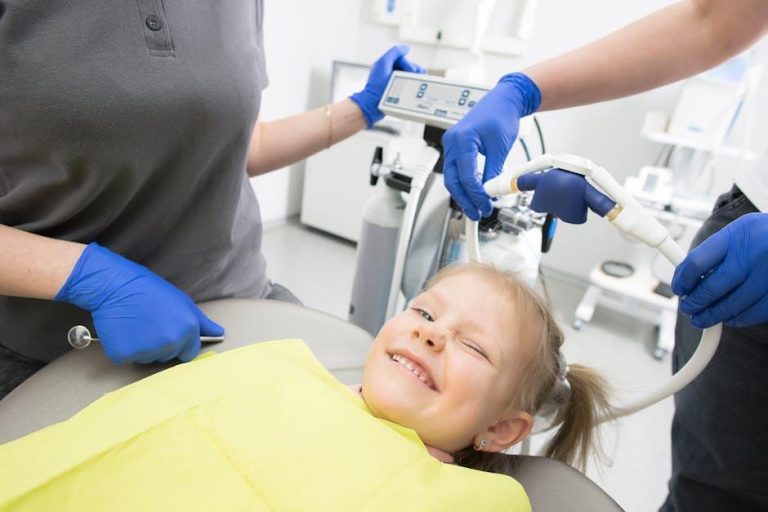1 in 3 Kids Has Dental Problems, Poll Finds – U.S. News & World Report
Recent findings from a U.S. News & World Report poll have brought to light a sobering reality: 1 in 3 kids in the United States is currently facing dental problems. This statistic underscores a growing oral health concern for parents, educators, and healthcare providers alike. Dental issues in children can have lasting impacts on their overall well-being, academic performance, and social confidence.
In this comprehensive article, we explore the alarming findings of the poll, understand the leading causes of pediatric dental problems, discuss preventive measures, and provide practical tips to help parents ensure their children maintain a healthy smile.
Understanding the Poll & Key Findings
The national poll conducted by U.S. News & World Report surveyed thousands of parents and caregivers across diverse communities, revealing the scope and scale of dental issues affecting children. The headline statistic—that about 33% of children have experienced dental problems in the past year—is a wake-up call.
| Key Finding | Details |
|---|---|
| Prevalence of Dental Issues | 1 in 3 children affected by dental problems |
| Most Common Problems | Tooth decay (cavities), gum infections, tooth pain |
| Age Group Most Affected | Children aged 6-12 years |
| Contributing Factors | Poor dental hygiene, high sugar consumption, limited dental care access |
| Impact on Daily Life | Missed school days, difficulty eating, low self-esteem |
What Dental Problems Are Kids Facing?
- Tooth Decay and Cavities: The most common issue, caused primarily by bacteria that produce acids from sugary foods and drinks.
- Gum Disease: Early signs of gingivitis are showing up in kids as young as 6.
- Tooth Sensitivity and Pain: Leading to discomfort and sometimes infection.
- Malocclusion: Improper alignment of teeth affecting chewing and bite.
Why Are Dental Issues on the Rise Among Children?
Understanding why so many children are affected by dental problems can help caregivers take active steps to reverse this trend. Several key factors contribute to the high prevalence:
- Poor Brushing Habits: Lack of proper dental hygiene training or supervision.
- Unhealthy Diet: High intake of sugary snacks, sodas, and processed foods that accelerate tooth decay.
- Limited Access to Dental Care: Many families face barriers such as cost, transportation, or unavailability of pediatric dentists.
- Lack of Fluoride Exposure: Inadequate fluoride, whether from water or toothpaste, reduces cavity prevention.
- Awareness Gap: Parents and children may underestimate the importance of regular dental check-ups.
Benefits of Maintaining Children’s Oral Health
Keeping dental problems at bay doesn’t just preserve a child’s smile—it positively influences various aspects of their life:
- Improved Overall Health: Good oral health reduces risks of infections and chronic diseases.
- Better Academic Performance: Healthy children have fewer sick days and better concentration.
- Enhanced Self-Confidence: A bright smile fosters social interaction and emotional well-being.
- Cost Savings: Preventive care is more affordable than treating advanced dental issues.
Practical Tips for Preventing Dental Problems in Kids
Parents can play a vital role in steering their children away from dental issues by encouraging healthy habits early on. Here are some expert-recommended strategies:
| Tip | How to Implement |
|---|---|
| Establish a Brushing Routine | Brush twice daily with fluoride toothpaste; supervise young children |
| Limit Sugary Foods and Drinks | Offer healthy snacks like fruits, veggies, and cheese; reduce soda and candy intake |
| Schedule Regular Dental Visits | Visit a pediatric dentist every 6 months for cleanings and check-ups |
| Use Dental Sealants | Ask your dentist about sealants to protect molars from decay |
| Encourage Drinking Water | Promote water consumption to rinse away food particles and stimulate saliva |
Additional Advice:
- Ensure children wear mouthguards during sports.
- Teach flossing techniques starting at age 4-6 as suitable.
- Lead by example: Parents maintaining good oral hygiene inspire kids.
Case Study: Successful Dental Intervention in a School District
One notable example comes from a Midwestern school district that implemented a comprehensive dental health program after recognizing high rates of cavities among students. The program included:
- On-site dental screenings every semester
- Fluoride varnish treatments administered by mobile dental clinics
- Parent workshops educating families on nutrition and dental care
- Incentives and rewards for regular brushing and dental visit checklists
Within two years, the district reported a 25% reduction in dental decay incidents and improved school attendance. This initiative highlights that targeted community interventions can significantly reduce pediatric dental diseases.
Firsthand Experience: A Parent’s Journey Tackling Tooth Decay
“When my 7-year-old started complaining about tooth pain, I realized we had neglected dental visits due to a busy schedule. After seeing the dentist, we learned about the dangers of sugary drinks and how certain snacks harm teeth. With guidance, we built a routine and cut back on sweets. Now, my child looks forward to brushing and feels proud of their healthy smile.”
– Sarah M., Proud Parent
Conclusion: Prioritizing Children’s Dental Health for a Brighter Future
The revelation from the U.S. News & World Report poll—that 1 in 3 kids has dental problems—signals an urgent call for action. Dental health is foundational to a child’s physical health, social development, and quality of life.
By understanding the causes, embracing prevention practices, and advocating for access to care, parents and communities can combat this growing challenge. Regular dental checkups, healthy dietary habits, and consistent oral hygiene are the pillars for a cavity-free childhood.
Let’s empower our kids with the knowledge and resources they need to flash their healthiest smiles confidently. After all, a healthy mouth is the gateway to a healthy future.


